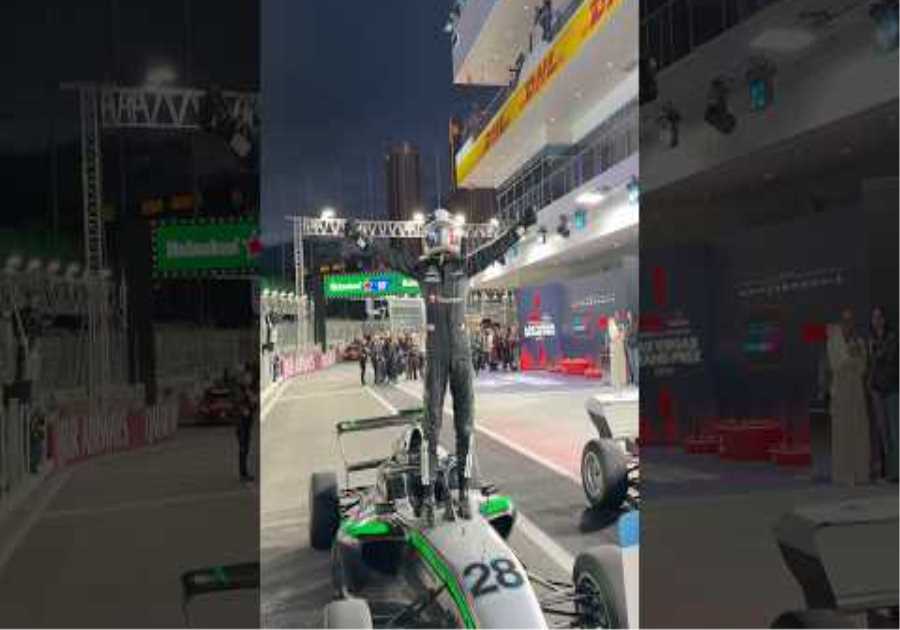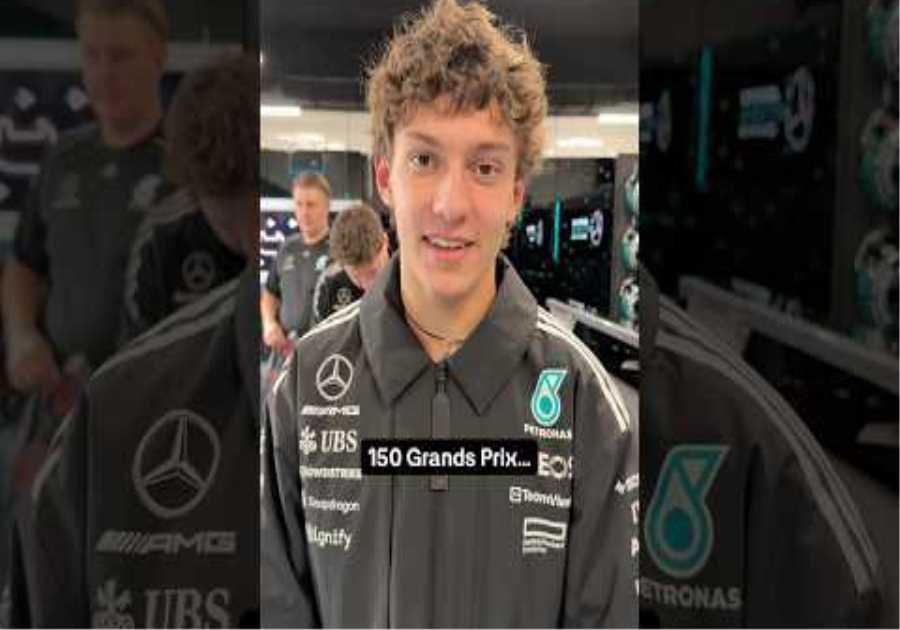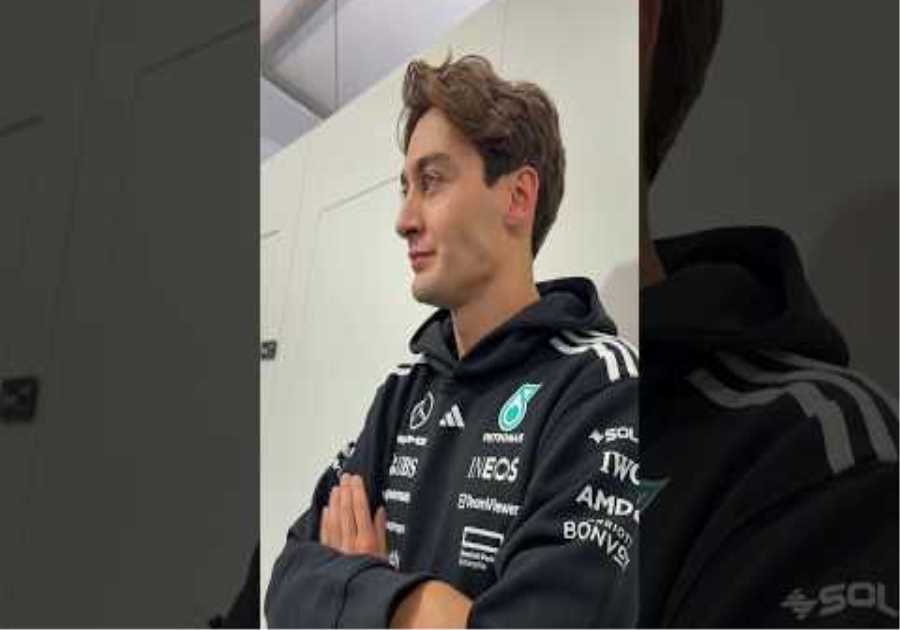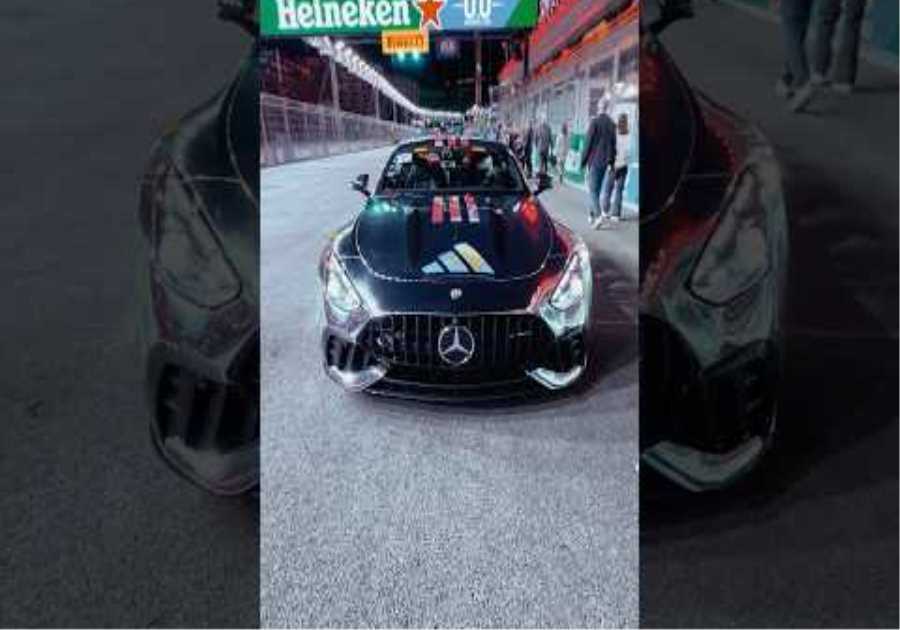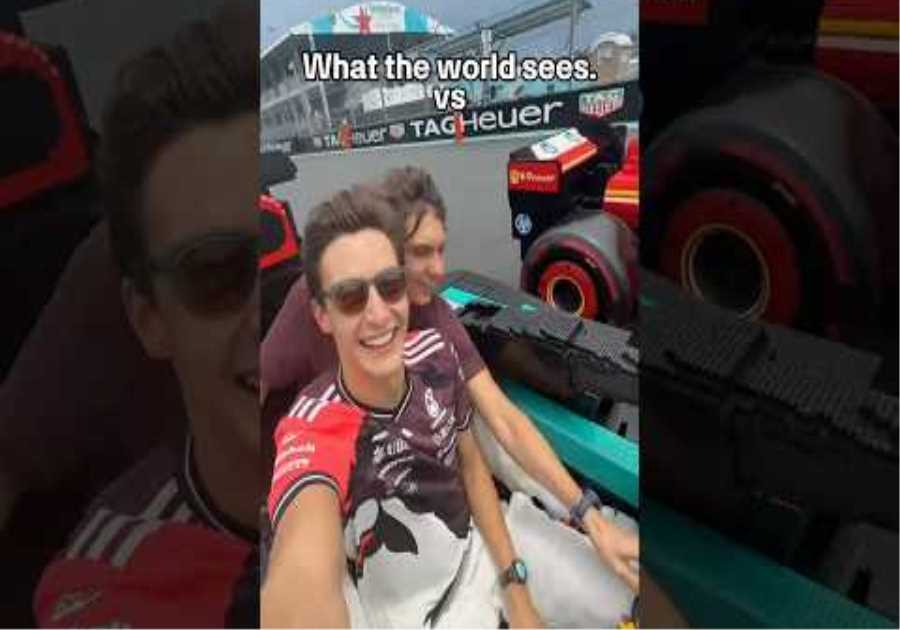
Red Bull introduced its third rear wing specification in Saudi (bottom, below) as it looked to trim downforce and drag further still for the high-speed street circuit.
The spoon shaping was retained, albeit with a much shallower main plane and consequently more graduated spoon shaping (dotted green line).
However, this forced the designers to create more of an abrupt juncture with the endplate, which results in a much tighter radius for the outer section of the wing (dotted yellow line).
Red Bull Racing RB18 rear wing comparison (dotted lines)
Photo by: Uncredited
Red Bull remains the only team on the grid to employ the stacked beam wing design. The team did, however, make some changes that went unnoticed in Bahrain and will likely further complement the changes made to the rear wing, above.
The lowermost element, which had an arched trailing edge (small inset, red arrow), has been trimmed down to reduce downforce and drag.
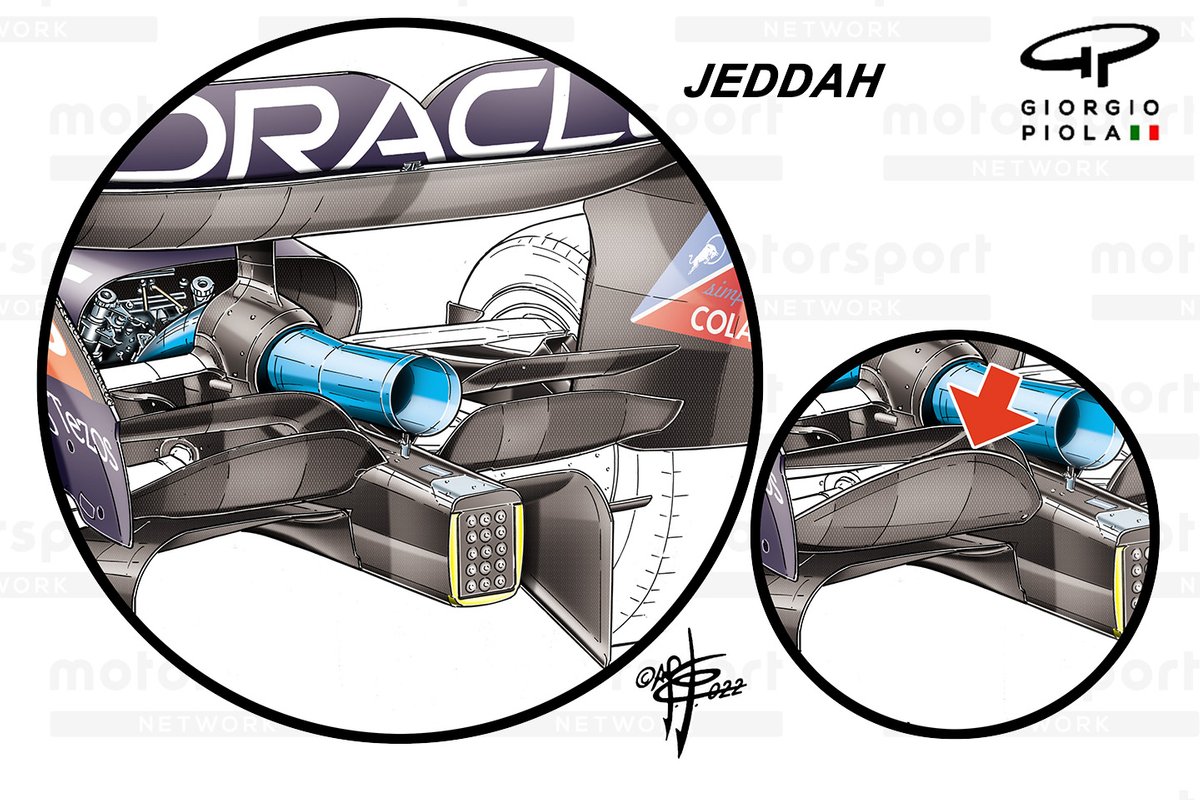
Red Bull Racing RB18 new beam wing comparison
Photo by: Giorgio Piola
What Red Bull’s rivals were developing
Ferrari also made changes to its rear wing in Jeddah in a bid to boost its high-speed performance, although not going to the same lengths as Red Bull as it was conscious of the impact this might have on tire degradation during the race.
The changes made to the wing reside in the shape and chord length of the upper flap, which not only has an impact on the downforce and drag created but also affects the power of the DRS.
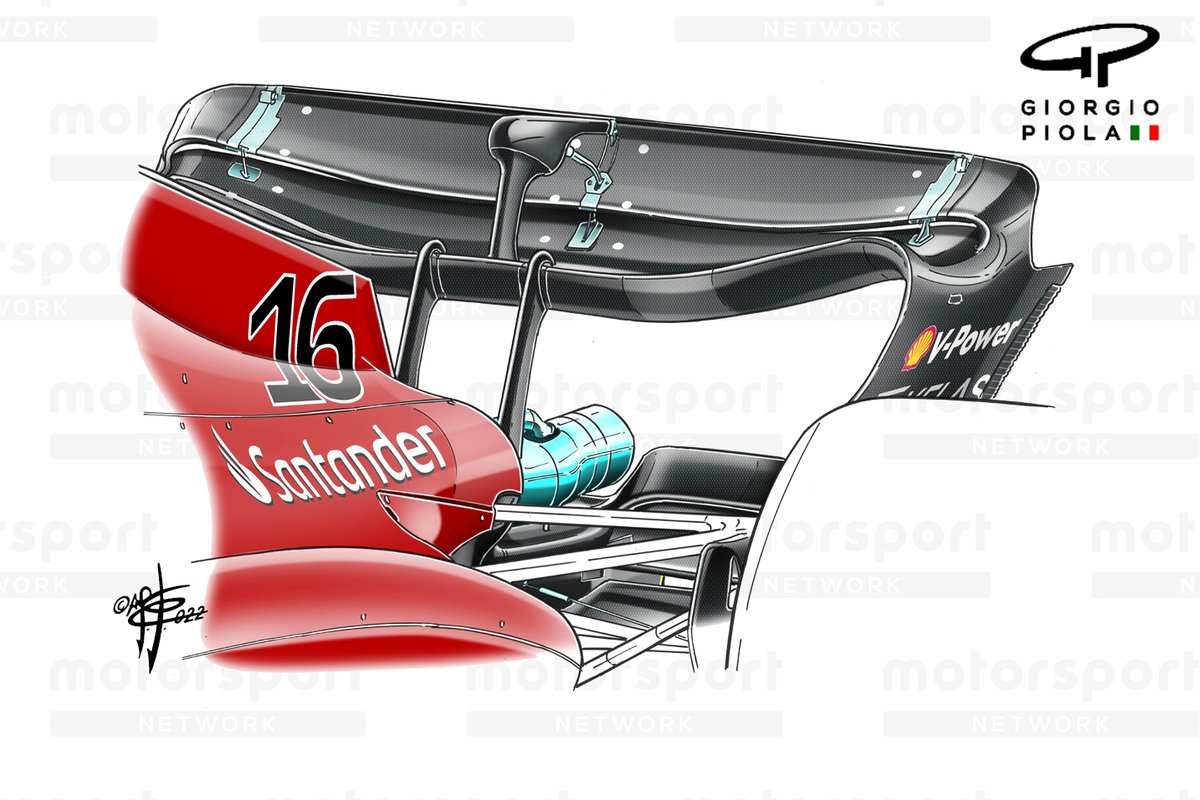
Ferrari F1-75 rear wing Saudi Arabian GP
Photo by: Giorgio Piola
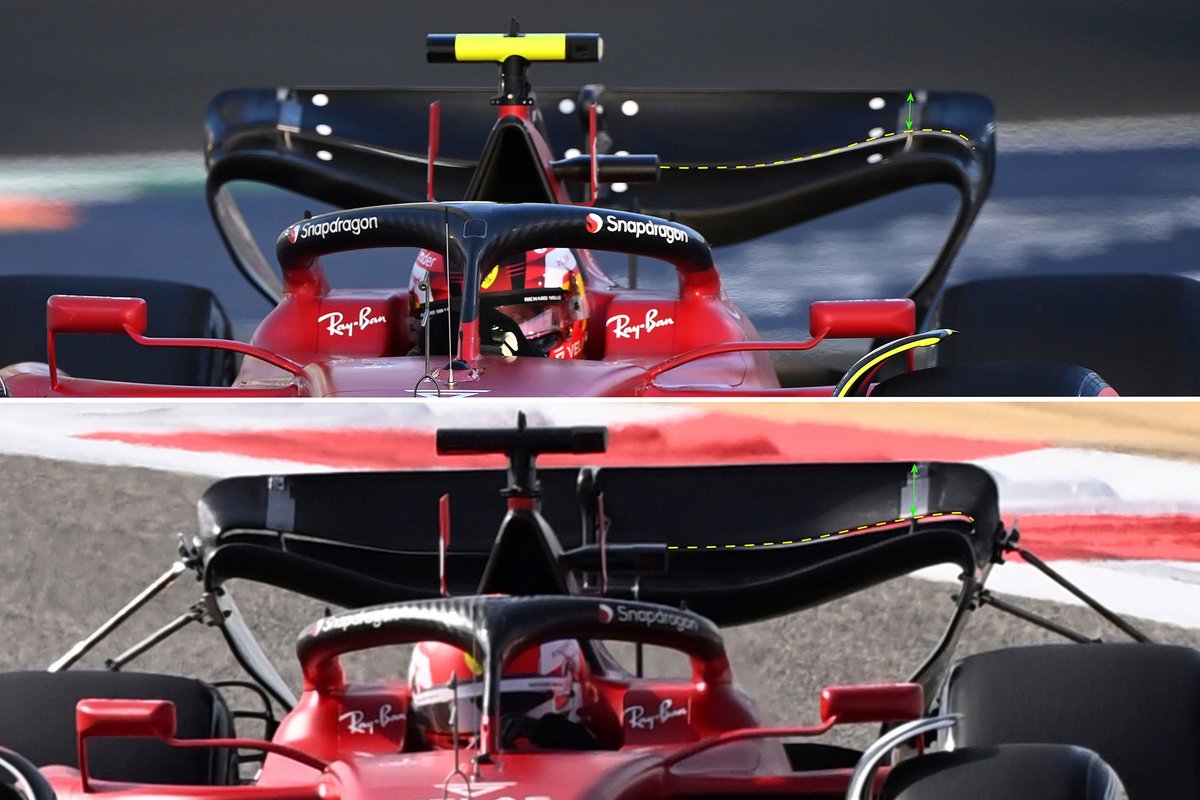
Ferrari F1-75 rear wing comparison (dotted lines)
Photo by: Uncredited
The shorter chord outer section of the upper flap can be noted here by the height of the green arrows, while the shape of the flap’s leading edge is also altered as a consequence (dotted yellow line).
This also results in the rolled section that forms the endplate creating less of an abrupt curvature where the slot gap terminates.
In the case of Mercedes, we’ve already heard from Toto Wolff that the team may need to address its downforce levels in deference to those around it, whilst also keeping a keen eye on how much its rivals have improved relative to them in terms of its power unit.
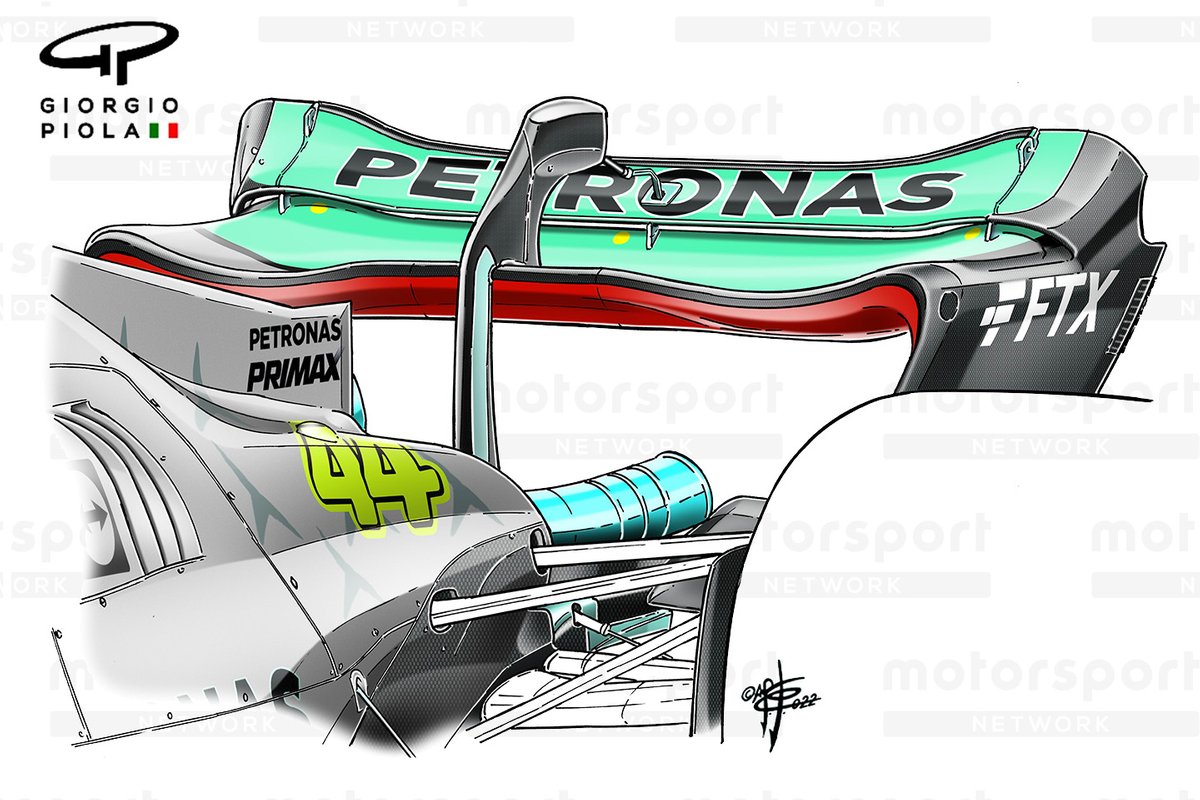
Mercedes W13 rear wing detail
Photo by: Giorgio Piola
Mercedes experimented with two different rear wings during FP1 in an effort to better understand its trim level. It was also monitoring and evaluating ways in which to calm the ill effects still being created by porpoising.
Where other teams had entirely new specification rear wings at its disposal, Mercedes had the same one as in Bahrain. However, the team had trimmed the rear wing’s upper element in the central section in order to reduce the downforce and drag being created.
Hamilton tried a rear wing solution with a Gurney flap on the trailing edge of the upper flap to help with balance in first practice (pictured).
However, by the time qualifying and the race rolled around, Mercedes had opted to remove the Gurney as it offered the best trade-off between the downforce required to master the high and low speed sections of the circuit, whilst also reducing drag to try and help them compete with their rivals on the straights.
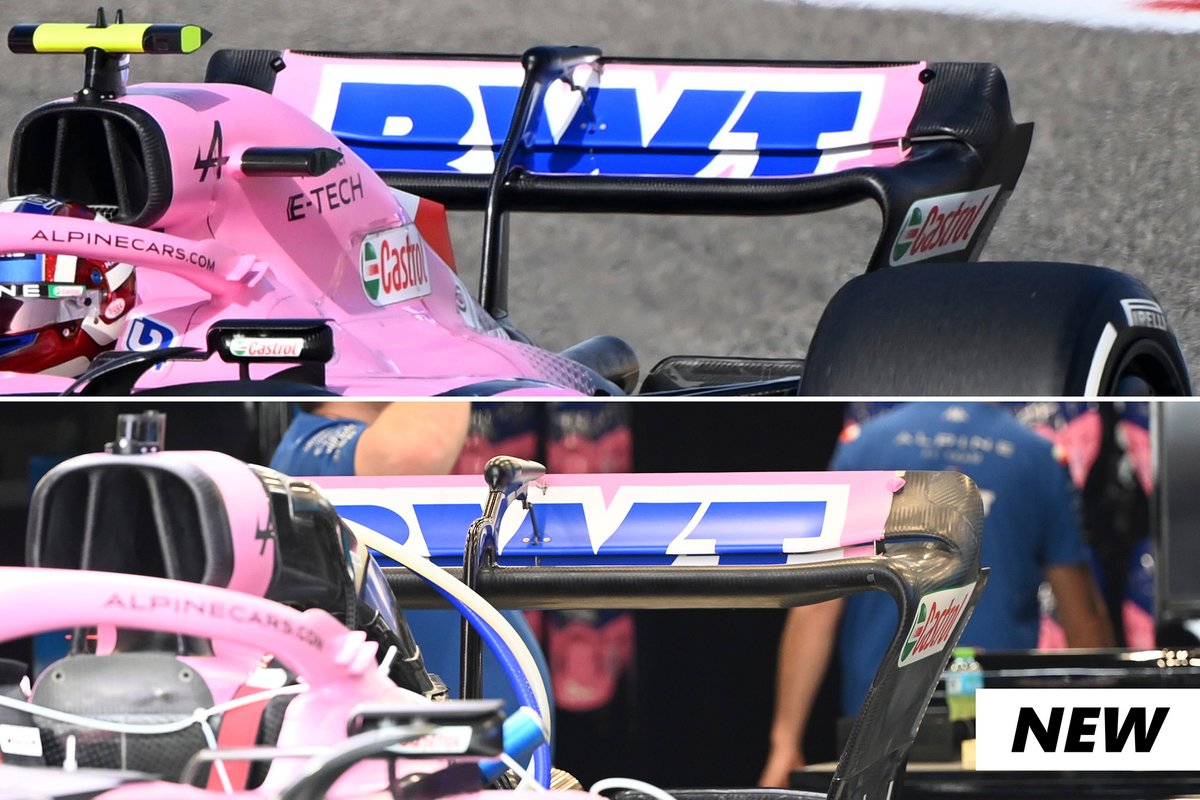
Alpine A522 rear wing comparison
Photo by: Uncredited
Alpine had already shown its hand in Bahrain when it came to the design of its lower downforce rear wing, with the team checking it performed as anticipated ahead of schedule. As you can see in the comparison, the overall design philosophy is very similar, regardless of the change in the height of the flaps and the mainplane.
You’ll note that the lower downforce configuration has a shorter connection between the swan-neck pillar and the DRS pod as a consequence, while the Gurney flap was also discarded.
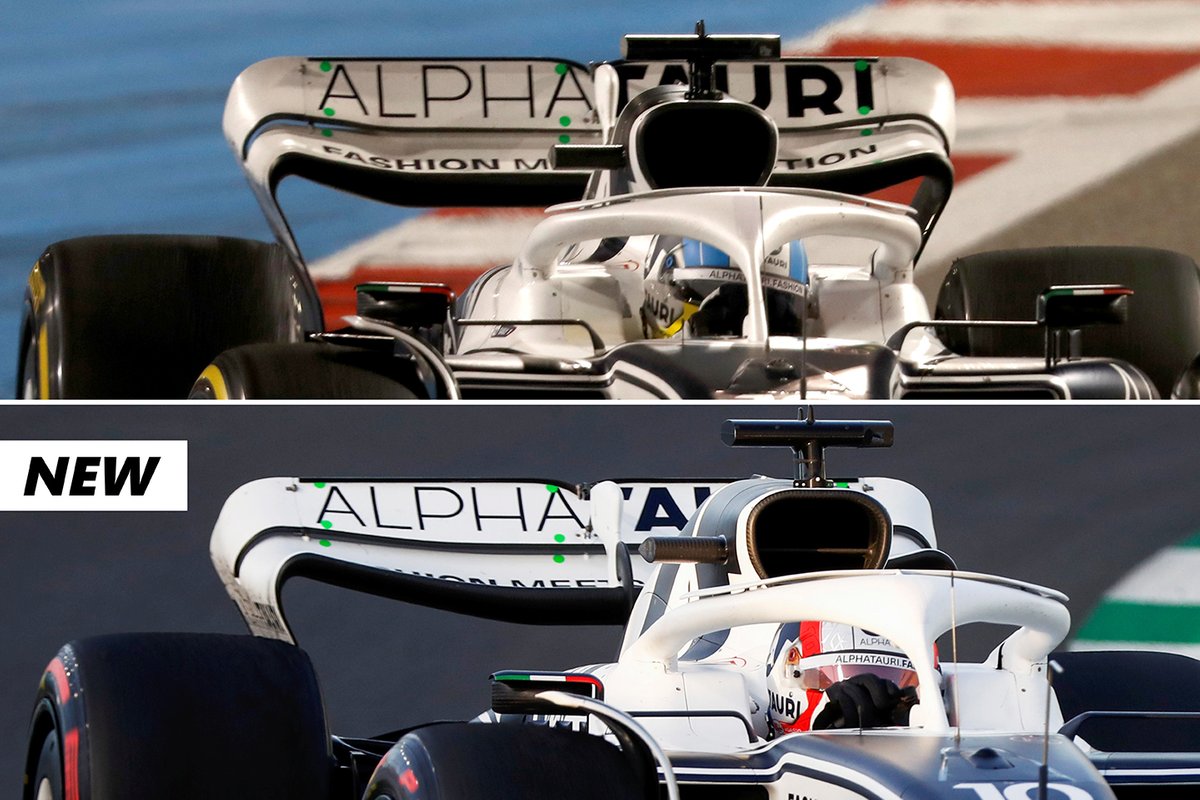
AlphaTauri AT03 rear wing comparison
Photo by: Uncredited
AlphaTauri was another team that arrived in Jeddah with a new rear wing assembly to meet the demands of the circuit. Much like its sister team, Red Bull, this has led to the mainplane’s spoon shape being redistributed, with a narrower central section and a gentler curvature towards the rolled endplate, which is also redefined.
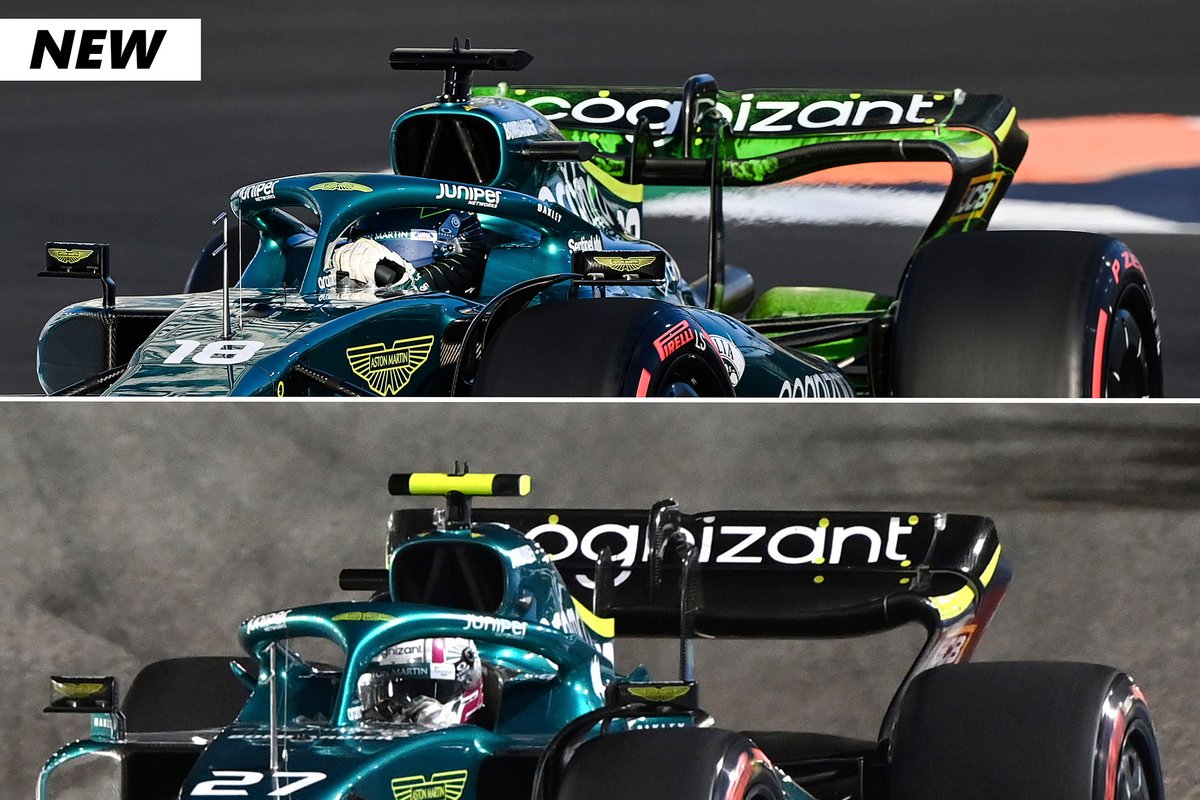
Aston Martin AMR22 rear wing comparison
Photo by: Uncredited
Aston Martin also had a new rear wing arrangement for Saudi Arabia, with a significant reduction made to the size of the wing and much more deeply sculpted spoon shape in the outer section to help reduce downforce and drag.
Note that the mounting pillars were also reduced in height to match the much shallower mainplane they’re mounted to.
The team also made a significant alteration at the front of the car, with the shape of the upper flap changed in the central section to balance the new downforce level (lower of the two shown). The more pronounced flat central portion of the wing was reduced dramatically, making way for a more sinuous shape, while the flap below was also reprofiled in response.
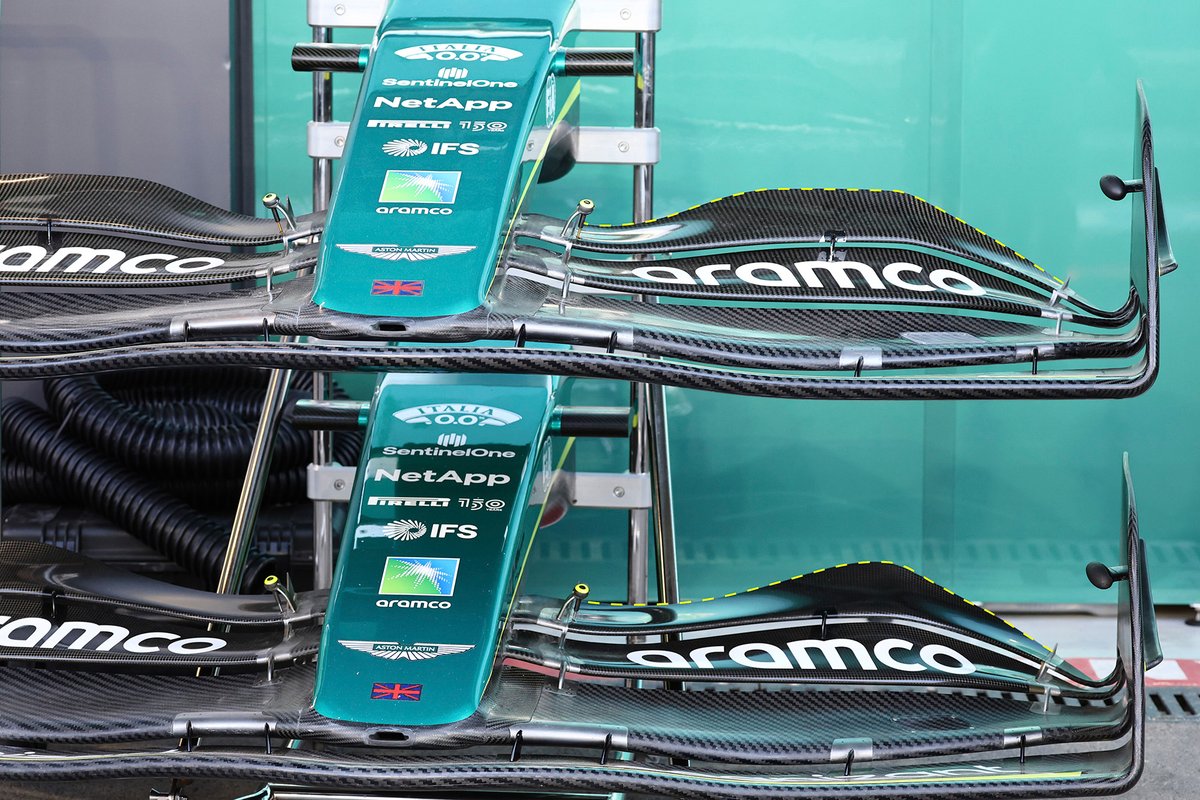
Aston Martin AMR22 front wing comparison
Photo by: Uncredited
The team removed the halo winglets that it introduced in Bahrain but also added a floor stay ahead of the rear wheels to help prevent the floor from flexing too much under load.

